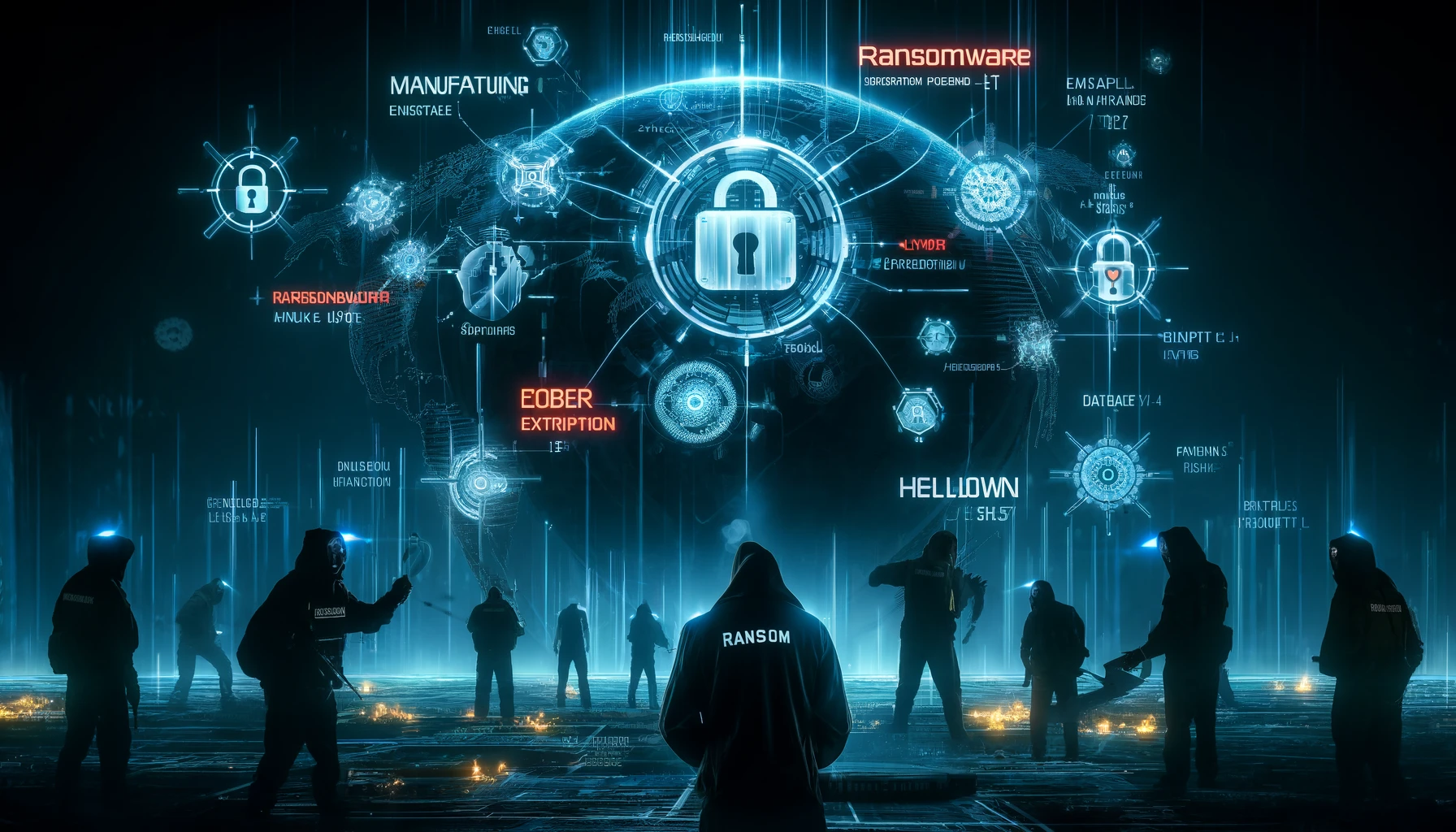Summary:
In August 2024, ransomware attacks saw a significant increase, driven by multiple ransomware groups, including RansomHub. According to reports, RansomHub alone was responsible for 16% of these attacks. This rise highlights the growing complexity and prevalence of ransomware threats globally, with industrial sectors being the most targeted.
The tactics of ransomware groups are evolving, as seen with tools like EDRKillShifter employed by RansomHub, which disables Endpoint Detection and Response (EDR) software. This allows them to bypass security defenses and escalate their attacks. The rise in ransomware incidents is alarming, particularly for sectors such as manufacturing, telecommunications, and IT services, with newer groups like Lynx and Helldown making their mark by using advanced encryption techniques and double-extortion tactics(TechFinitive)(Cyfirma).
The increased volume and sophistication of ransomware attacks emphasize the need for organizations to bolster their defenses, particularly by addressing vulnerabilities and deploying more advanced security solutions.
Content:
Ransomware continues to be one of the most disruptive threats to global cybersecurity. In August 2024, the number of ransomware incidents sharply increased, highlighting the ongoing evolution of ransomware tactics and the need for more robust defenses. The RansomHub group, in particular, played a significant role in this surge, accounting for 16% of all ransomware attacks during the month(Cyfirma).
Evolving Tactics: Ransomware Tools and Techniques
One of the primary reasons for the increase in attacks is the sophisticated tactics ransomware groups are using. RansomHub and other actors have adopted tools like EDRKillShifter, a malware designed to disable Endpoint Detection and Response (EDR) software. By installing vulnerable drivers and exploiting them to bypass security defenses, attackers can more easily infiltrate systems(TechFinitive).
Additionally, newer ransomware groups like Lynx and Helldown are employing advanced encryption methods and double-extortion tactics. In double-extortion, not only do they encrypt data, but they also threaten to release it publicly unless a ransom is paid. This method has been highly effective, particularly against industries like IT services, telecommunications, and manufacturing, which were prime targets during August(Cyfirma).
Impact on Key Sectors
Throughout the month, critical infrastructure sectors, including healthcare, government, and industrial sectors, bore the brunt of these attacks. Ransom demands varied greatly, with some groups, such as BlackSuit, demanding up to $60 million from high-value targets like government facilities(Cyfirma). Smaller organizations, especially small-to-mid-sized businesses, remain at high risk due to a lack of advanced security measures, making them easy prey for ransomware actors like Dispossessor, who employ a mix of phishing, remote desktop protocol (RDP) exploitation, and vulnerable application access(TechFinitive).
Ransomware Groups on the Rise
Several new ransomware groups emerged or gained notoriety in August, most notably Lynx and Helldown. Lynx has taken the double-extortion model to new heights, claiming more than 20 victims by encrypting systems and exfiltrating sensitive data. The group operates under strict guidelines, avoiding targets in sectors like healthcare and non-profits, but has aggressively pursued other industries(Cyfirma).
Meanwhile, Helldown has quickly established itself with advanced encryption methods and a strategic focus on disabling security defenses before executing attacks. This group has targeted a wide array of sectors, using AES, Salsa20, and RSA encryption to lock down systems(Cyfirma).
What This Means for Cybersecurity
The surge in ransomware activity this past August signals the increasing sophistication and aggressiveness of ransomware groups. As threat actors continue to professionalize their operations, leveraging advanced tools and targeting critical sectors, organizations must take a proactive approach to defending against these attacks.
To mitigate the risks posed by ransomware, organizations are encouraged to:
- Enhance Endpoint Protection: Implement advanced detection systems that can quickly identify and respond to suspicious activities, particularly EDR and MFA solutions.
- Regularly Update Security Protocols: Regularly patch vulnerabilities in systems and software to prevent known exploits like those used by RansomHub and BlackSuit(Cyfirma)(TechFinitive).
- Improve Backup and Recovery Plans: Regular backups of critical systems can prevent data loss in case of a ransomware attack, ensuring that companies can recover without paying ransoms.
As ransomware continues to evolve, businesses must remain vigilant, adopting more advanced, identity-centric defenses that go beyond traditional security measures. Failure to do so could result in significant financial and reputational damage.
Sources:
- TechFinitive – Ransomware August 2024 round-up
- CYFIRMA – Tracking Ransomware in August 2024


